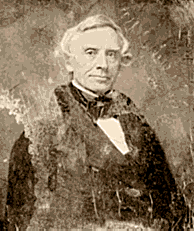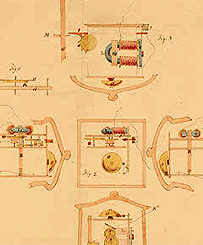 |
|
|
||||||||||||||||||||||||||||||||||||||
|
The Victorian Internet The Remarkable Story of the Telegraph and the Nineteenth Century's On-Line Pioneers.
Jean-Antoine Nollet, the Abbot of the Grand Convent of the Carthusians in Paris decided to test his theory that electricity traveled far and fast. He did the natural thing on a fine spring day in 1746, sending 200 of his monks out in a line 1 mile long. Between each pair of monks was a 25-foot iron wire. Once the reverend fathers were properly aligned, Nollet hooked up a battery to the end of the line and noted with satisfaction that all the monks started swearing, contorting, or otherwise reacting simultaneously to the shock. A successful experiment: an electrical signal can travel a mile and it does so quickly. Of course, this is the kind of experiment you can only run once as your monks may prove less-than-cooperative the second time around. This story of the early days of electrical experimentation leads off The Victorian Internet, a fascinating story of the telegraph by Tom Standage, a journalist who writes for The Economist. Thankfully, Standage makes the point that the telegraph was the Internet of its age, but then lets the metaphor drop and tells the story of the spread of the telegraph on its own terms. The telegraph began as an optical system in France after the revolution, invented by Claude Chappe. His systems of towers, telescopes, and various signaling devices spread across Europe so that by the mid 1830's there were almost 1000 telegraph towers in a half-dozen countries. But, the optical telegraphs suffered from many drawbacks, not the least of them being rain, mist, and darkness, all fairly frequent occurrences in much of Europe. The idea of an electrical telegraph was bandied about by many, often with enough fervor that it joined the perpetual motion machine as one of those topics that signaled the presence of a perhaps-crazed inventor. In 1832, Samuel B. Morse, a painter, was on a ship back from Europe when he caught the telegraph bug. Seven years earlier, he had been traveling to Washington, D.C. to do Lafayette's portrait and had received a letter that his wife had died. He raced back home, but the letter took so long in transit that he missed her funeral. That experience marked him, and the idea of an electric telegraph hit home. Morse got off the boat from Europe with the sketches for an electric telegraph in hand and the beginnings of the Morse code already done. In Europe, William Fothergill Cooke started work on the electrical telegraph in 1836, a few years after Morse. He had the same problem Morse did, trying to get the electrical signal to go long distances. As Morse was doing in the United States, Cooke sought advice from a variety of experts on the electrical transmission issue, consulting with Michael Faraday, Peter Roget, and ultimately teaming up with Professor Charles Wheatstone, the inventor of the concertina. Morse in the United States and Cooke and Wheatstone in England met with many skeptics, but finally in 1844 Morse got his line up and running between Washington and Baltimore and transmitted his first message:
The new medium took off like wildfire. By 1850, there were over 12,000 miles of telegraph lines in the United States. The lines quickly circled the world, creating a global network and global industries. Standage weaves all the history of the telegraph together in an impeccably researched, very readable book. He doesn't get bogged down in details of operation or theory, yet conveys a great deal of information on how the medium grew and what it changed. Throughout the book are fascinating nuggets of information. Though the parallels to our modern times are evident, Standage doesn't club the reader over the head with the parallels. Some parallels may seem obscure, but will hit home for those that work on the Internet. Take the address for a telegraph. Most telegraphs were sent to a SnailMail® address. The telegraph network would transmit it to the nearest post office (in Europe) or telegraph company office (in the U.S.) and a messenger would take it to the final destination. The problem with postal addresses was that they chewed bandwidth. In Britain, somebody had the brilliant idea of coming up with a new addressing system, based on nicknames. Instead of chewing up valuable bits on the line (and paying for those bits by the word), people could refer to a destination by a registered nickname. These nicknames were quite popular, with over 35,000 being registered, yielding a substantial profit for the postal system, the monopoly provider of the namespace. While Standage explains the history of the telegraph, he also shows how the telegraph spawned much of our modern age. One inventor trying to squeeze more capacity out of telegraph lines was Alexander Graham Bell, who was working on a harmonic telegraph, one that would send several signals simultaneously at different pitches. When his assistant plucked a reed too hard at one end of the line, Graham heard more than a signal: he heard the unmistakable sounds of the reed itself and realized that the electrical lines could transmit voices. His telephone invention grew even faster than the telegraph; over 30,000 phones were in operation 3 years after the first service began. Another inventor, Jean Baudot, was working on an automatic telegraph, one that would replace the key operator with machine transmission. Baudot invented a five bit digital code and a way of turning that digital code into electrical pulses using a modulator/demodulator (modem) that operated at 2-3 pulses (or “Baud”) per second. Perhaps one of the most fundamental technologies spawned by the telegraph was electricity itself. One young telegraph operator, Thomas Edison, soon turned from fiddling with new hacks on telegraph equipment to electricity, moving on to start the first systematic commercial electrical distribution systems. While Standage doesn't go into this story in great depth, a great follow on to the Victorian Internet can be found in Wolfgang Schivelbusch's Disenchanted Night: The Industrialization of Light in the Nineteenth Century, a fascinating look at the lighting of the world and the spread of electrical systems.
One of the most touching stories in Standage's Victorian Internet is of the final tribute to Samuel Morse. Though Morse was widely credited and revered as the father of the telegraph, he received very few financial rewards. Though he was able to buy a nice house, most countries operating the Morse system failed to grant him patents and many companies in the United States did not honor his patents. With Morse pushing 80, a young telegraph operator mounted a campaign to erect a statue of Morse in New York to honor his hero. Donations from telegraph operators all over the world, and in 1871, a banquet was held to unveil the statue and honor the aging inventor. He used the occasion to make this his farewell to the telegraph operators of the world. That night, all the telegraph wires in the United States were connected to a single key in the banquet hall. An operator keyed in Morse's message for him: GREETINGS AND THANKS TO THE TELEGRAPH FRATERNITY THROUGHOUT THE WORLD. GLORY TO GOD IN THE HIGHEST, ON EARTH PEACE. GOOD WILL TO MEN. Then, the 80-year old Morse with a long flowing white beard, the father of the telegraph, sat down at the table and keyed in his signature. Standage's The Victorian Internet is an example of the history of technology at its finest. It explains the technology, but shows how the technology became real and how it changed our lives. This book is a must-have for anybody interested in how our village became global.
|
|||||||||||||||||||||||||||||||||||||||
|






